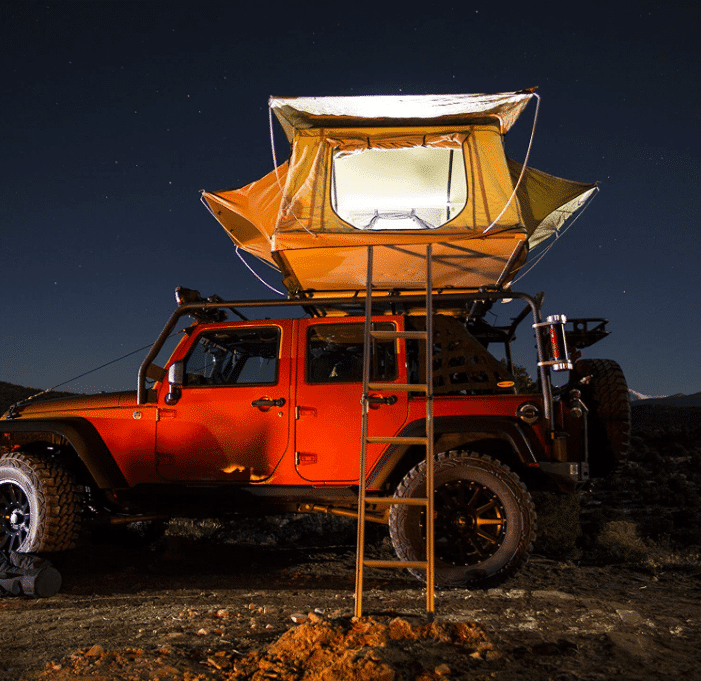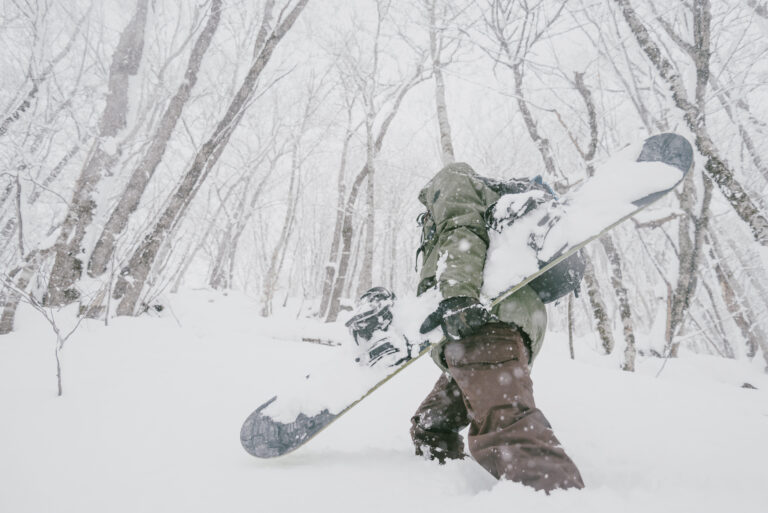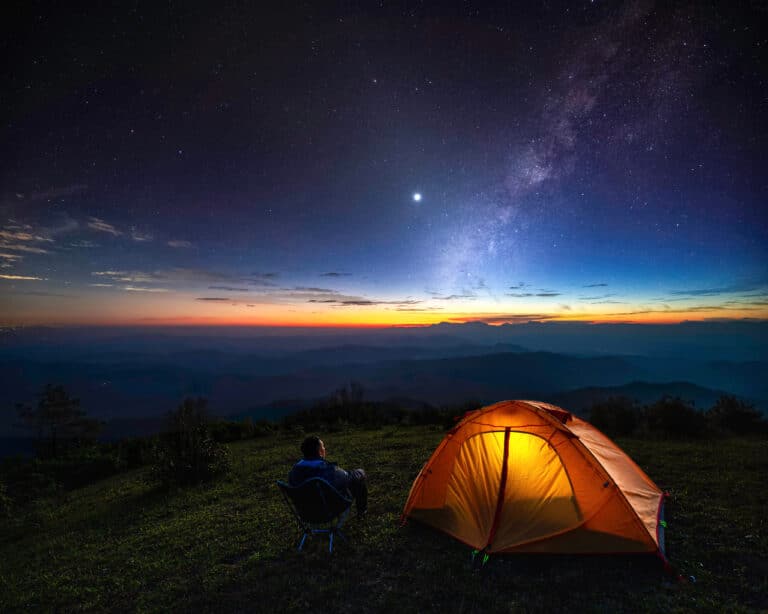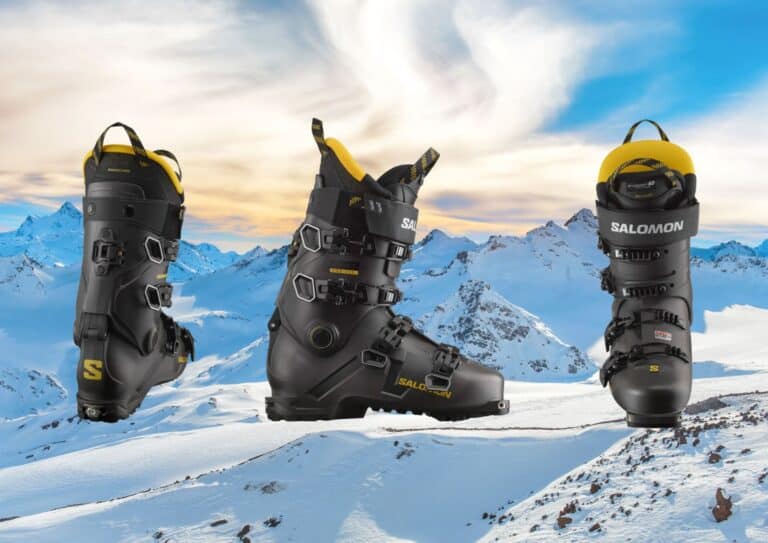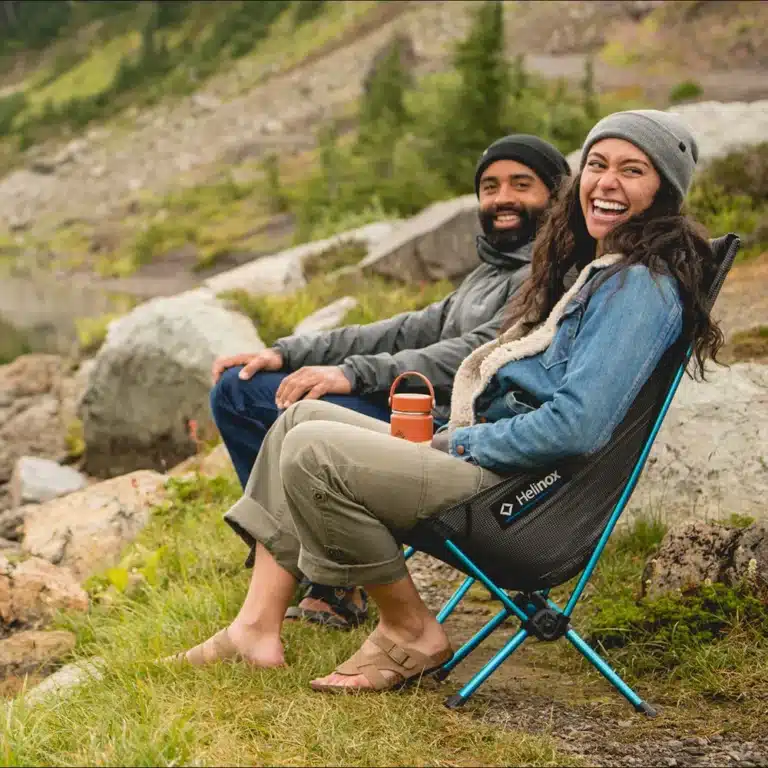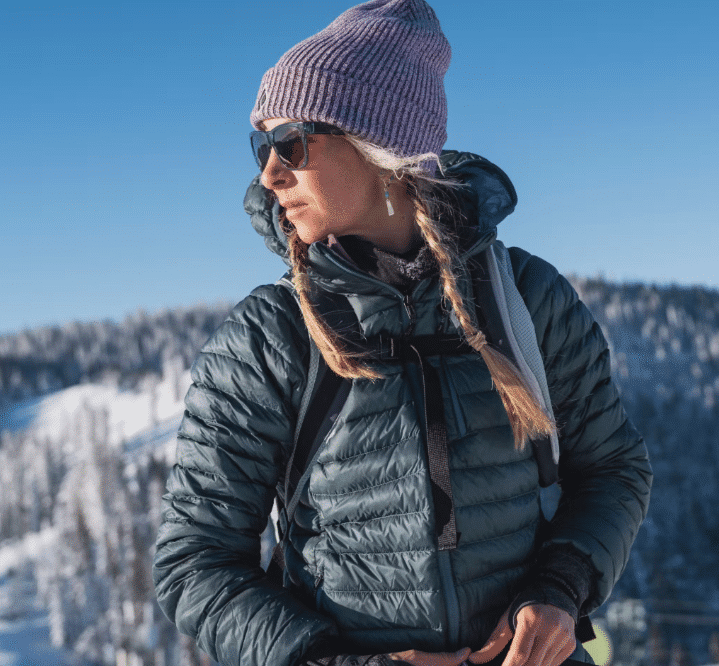Master the Slopes: Your Ultimate Guide to Powder Skis 2024
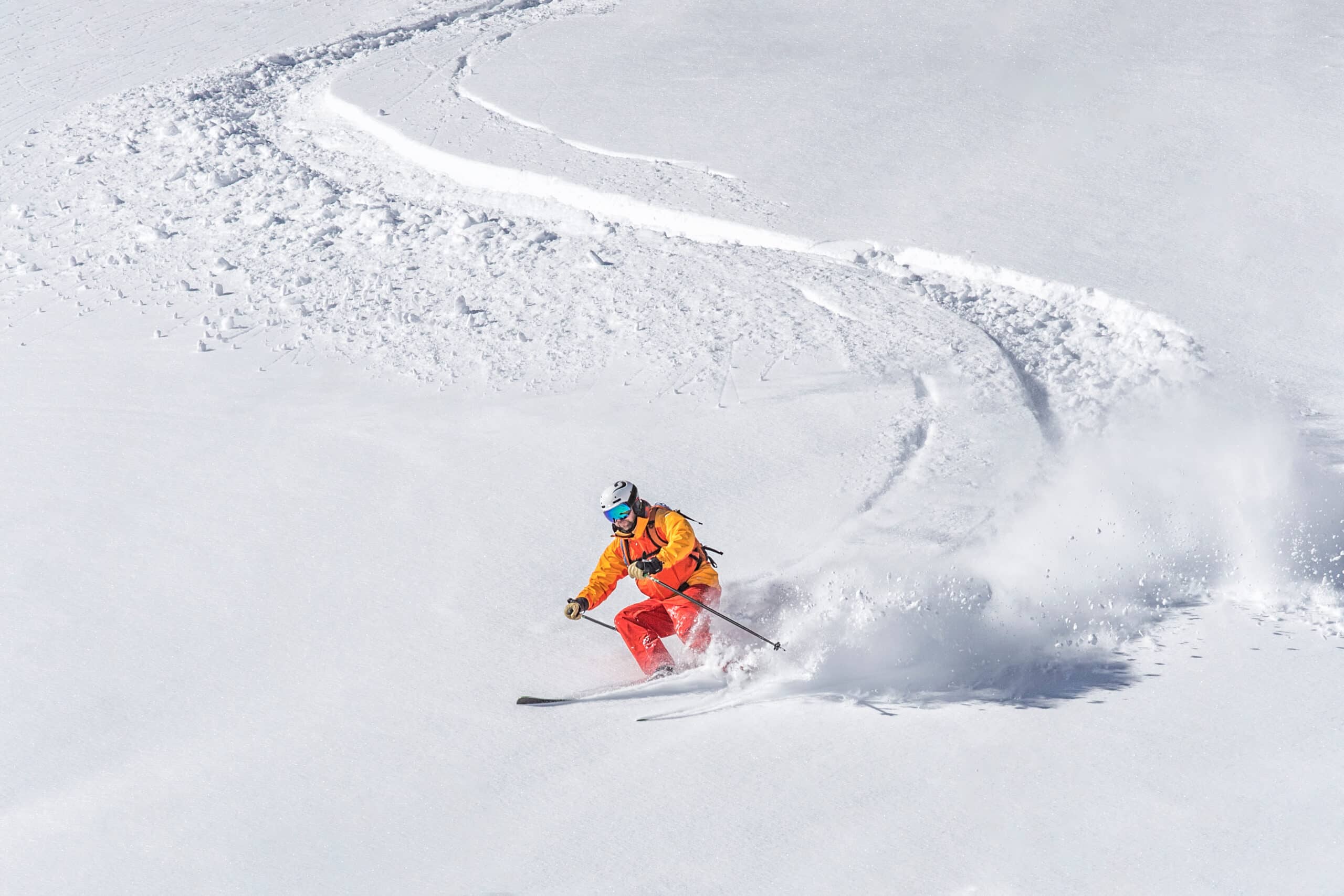
Our content may include affiliate links, through which we earn a small commission on purchases. Want to learn more about us? Read here.
As the snow begins to fall in the mountains and anticipation for the upcoming ski season grows, it’s time to start thinking about the gear that will help you conquer the slopes. The perfect powder skis can make all the difference, allowing you to float effortlessly through deep, fresh snow and create unforgettable moments on the mountain.
In this comprehensive guide, we will discuss their key features and provide tips for skiing in deep powder. Get ready to elevate your skiing experience and make the most out of those epic powder days.
Powder Ski Features Breakdown
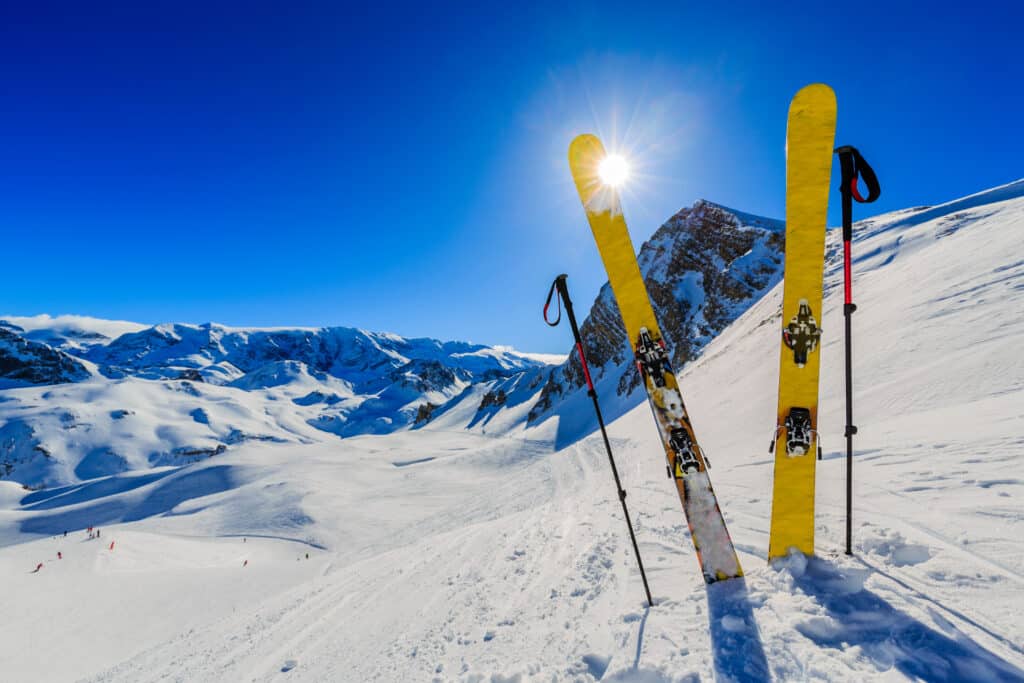
To maximize your powder skiing experience, you need to know the key features of a powder ski:
Waist width
Rocker profile
Turn radius
Materials and construction
Each of these factors significantly influences a ski’s performance in deeper snow and various conditions, thereby molding your overall skiing experience.
When choosing a ski, take into account the type of terrain you’ll be on.
Waist Width
Waist width is an important factor to consider when selecting powder skis, as it directly impacts a ski’s stability and agility. Powder skis typically have waist widths ranging from 98mm to 120mm. Here are some key points to keep in mind:

Wider skis provide better floatation and stability in deep pow.
A wider platform allows the ski to stay atop the snow and turn at lower speeds.
This enables you to navigate through less steep terrain with ease.
Conversely, skis with narrower waist widths allow for faster edge-to-edge transitions and increased agility, making them a better fit for tight trees and fluctuating snow conditions. Ultimately, finding the right waist width for your powder ski will depend on your personal preferences and the type of terrain you plan to conquer.
Rocker Profile
The rocker profile of a ski is another crucial feature to consider when selecting powder skis. Rocker skis, also known as reverse camber skis, curve upward at the tip and tail, providing better floatation and a more playful skiing experience in soft snow. This is in contrast to camber skis, which curve downward underfoot and provide better grip and stability on hard snow.

For those who ski on powder, a rocker profile with a substantial amount of tip and tail rocker, like the 30% rocker for tip and tail on the Atomic Bent Chetler 120, is preferable as it aids the ski in staying afloat in deep powder and enhances maneuverability. A rocker camber rocker profile, which combines rocker in the tip and tail with camber underfoot, offers a versatile and responsive ski that performs well in both deep powder and firmer snow conditions.
Turn Radius
Turn radius is another important factor in determining the performance of powder skis. Generally, a larger turn radius provides more stability, while a smaller radius allows for quicker turns. Powder skis often have larger turn radii, usually 20 meters or more, due to their wider width and less sidecut, which allows them to perform better in deeper snow and at high speeds.
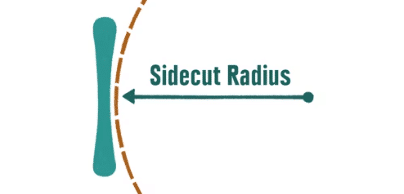
When choosing a powder ski, factor in your skiing style and the kind of terrain you’ll be traversing. If you enjoy making big, sweeping turns in wide-open powder fields, a ski with a larger turn radius will suit your needs. For those who prefer navigating through dense trees and variable snow conditions, a ski with a smaller turn radius will provide the agility needed for quick turns and precise control.
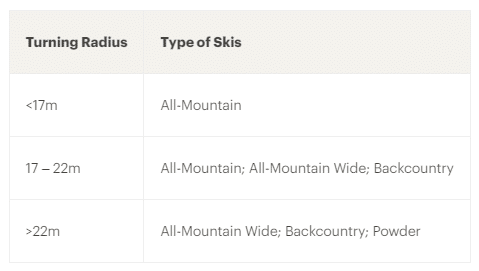
Materials and Construction
The choice of materials, cores, and laminates in ski construction can significantly affect a ski’s performance and attributes. Common core materials include wood, such as poplar and beech, which provide a lightweight and responsive feel, while carbon fiber and other lightweight materials can enhance a ski’s strength and stability without adding excessive weight.

Laminates, which consist of layers of various materials applied to the top and bottom of the ski, can also influence a ski’s performance. These layers not only protect the ski from damage but contribute to its overall stiffness, flex, and durability.
Grasping the materials and construction methods used in your skis will help you better appreciate their uniqueness and choose the ski that best suits your needs.
Skiing Technique for Powder
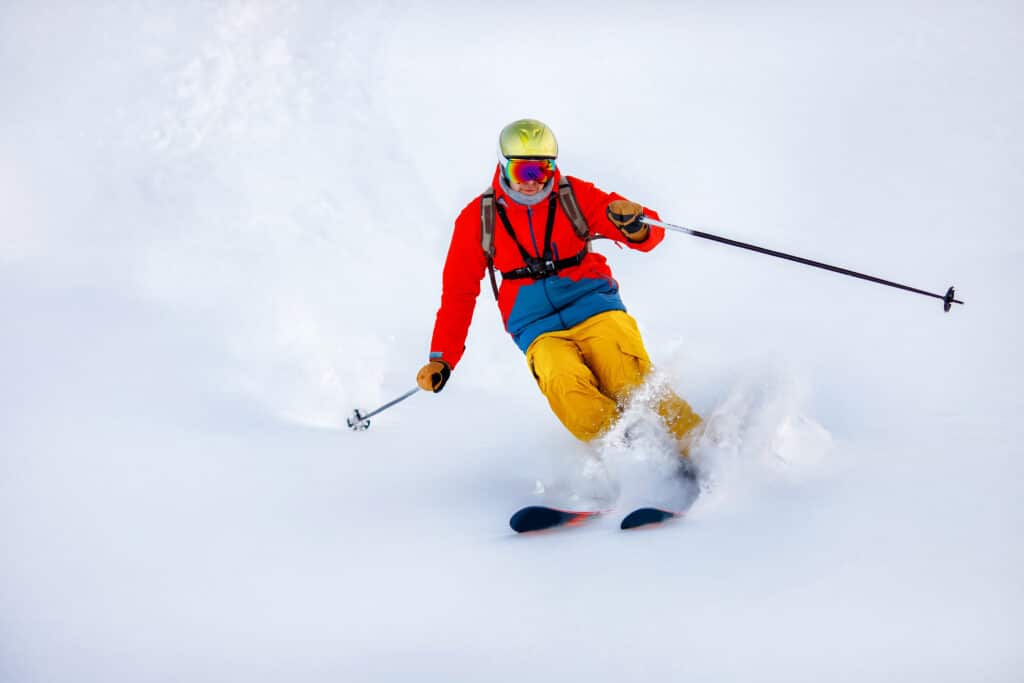
While skiing powder snow can be thrilling and exhilarating, it necessitates a different skill set and techniques compared to skiing on groomed trails. Proper body positioning and maintaining speed are crucial for ensuring a smooth and enjoyable ride in deep snow.
When skiing in powder, focus on body position and weight distribution. Keep your ankles flexed and your shins against the fronts of your skis for balance and control. Rather than relying on the edges of your skis for grip, use your feet and legs to steer the ski through the snow.
Additionally, maintaining a steady speed is essential for staying afloat in deep powder and avoiding getting bogged down.
Women’s Powder Skis
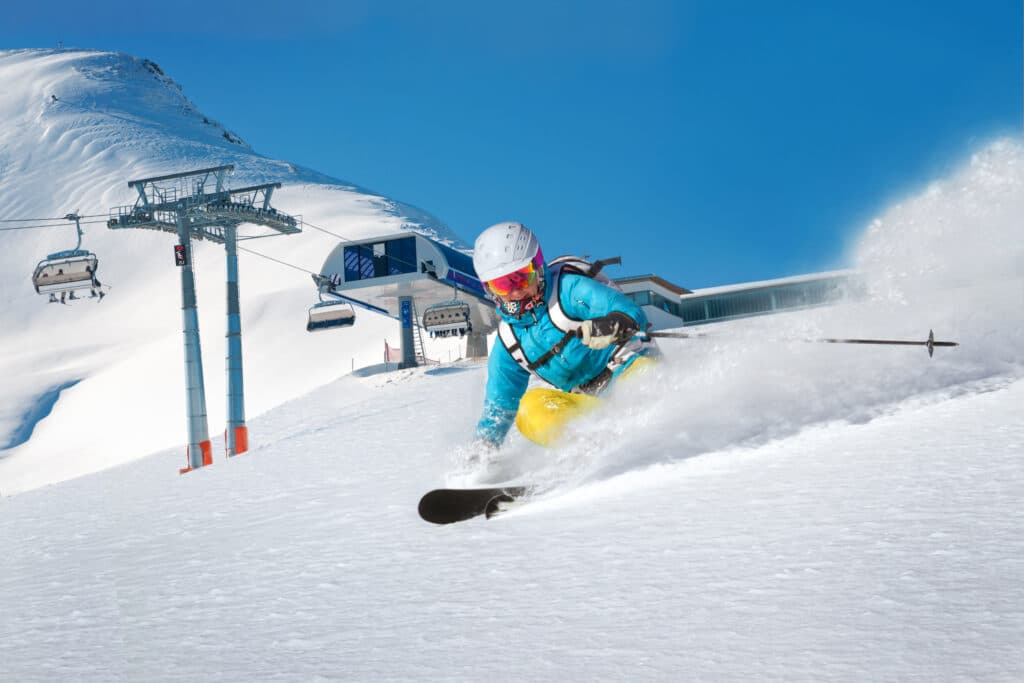
Women’s powder skis, designed specifically for lighter weight and nimble performance, also deserve a mention. Brands such as Coalition Snow offer women-specific powder skis like the Rafiki, which cater to the unique needs of female skiers. These skis often feature lighter construction and slightly different dimensions to provide optimal float and agility in deeper snow.
So, for the ladies hitting the slopes this season, be sure to check out the women-specific powder skis available on the market, crafted by top ski manufacturers.
Backcountry vs. Resort Powder Skis
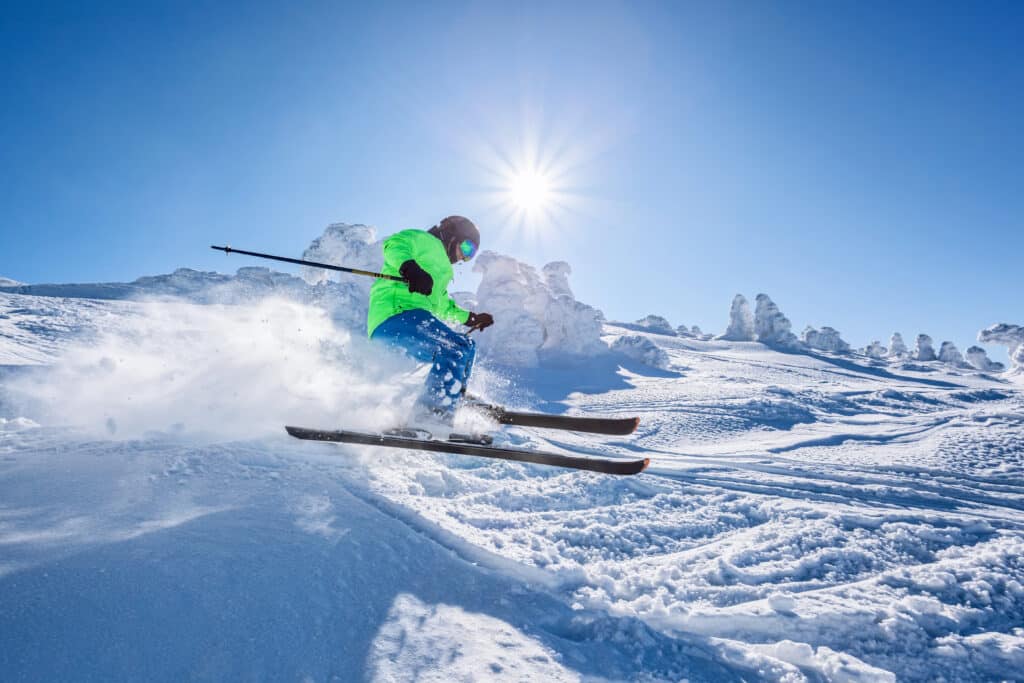
In the realm of powder skis, comprehending the differences between backcountry and resort skis is vital since they are designed for different skiing experiences. Backcountry skis are generally lighter and more maneuverable, making them ideal for off-piste exploration and freestyle skiers. These skis prioritize responsiveness and agility, allowing skiers to navigate through challenging terrain with ease.
On the other hand, resort powder skis are designed for stability and floating in deep snow within the boundaries of ski resorts. These skis are built for speed and stability, ensuring a smooth and enjoyable ride on groomed trails and off-piste areas within a resort setting.
Knowing the differences between backcountry and resort skis can help you make an informed decision when selecting the perfect ski for your needs.
Caring for Your Powder Skis
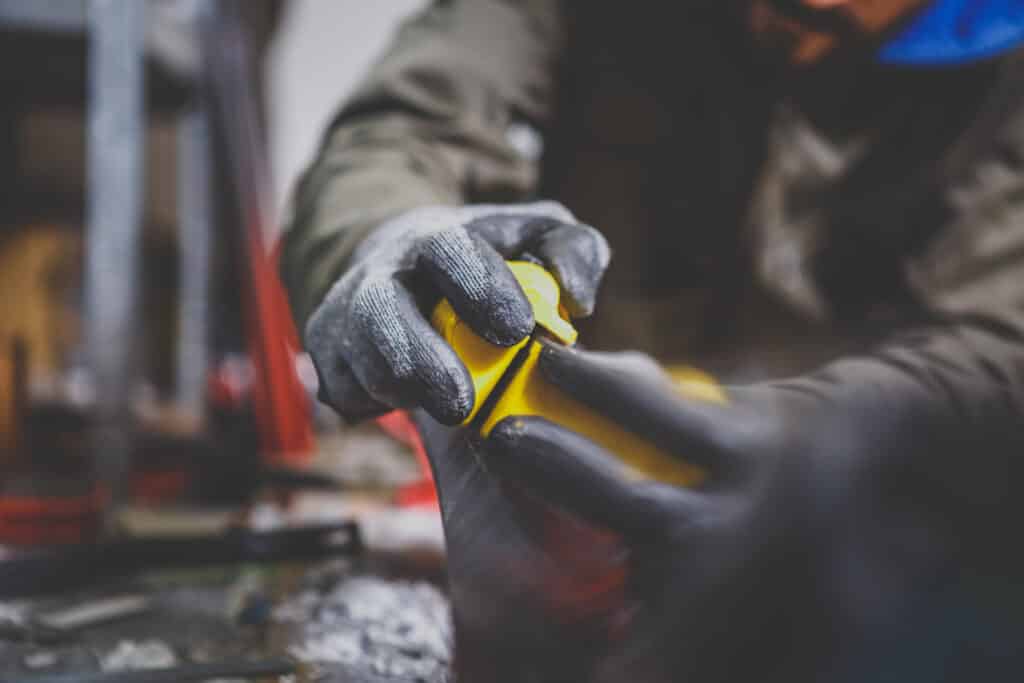
Proper maintenance and care for your skis are necessary to ensure their optimal performance and longevity. Regular waxing and sharpening are essential for keeping your skis in top condition, allowing them to glide smoothly and maintain an effective edge on the snow. Start by cleaning and drying your skis, then apply wax to the base and sharpen the edges with a file or stone.
Additionally, proper storage is crucial for preserving the integrity of your skis. Keep your skis in a cool, dry place away from direct sunlight and avoid exposing them to extreme temperatures or moisture. By investing time and effort into caring for your skis, you can extend their lifespan and ensure they remain a reliable companion on the mountain for years to come.
Summary
Does everyone need a dedicated powder ski? No, of course not. However, if you get to the point of being an advanced skier and you want to continue honing your skills, then a dedicated powder ski may be the answer for you. Plus you will not have to work as hard to stay afloat.
Selecting the perfect powder ski can greatly enhance your skiing experience, allowing you to float effortlessly through deep snow and create unforgettable moments on the mountain.
By understanding the key features of powder skis, such as waist width, rocker profile, turn radius, and materials and construction, you can make an informed decision and choose the ski that best suits your needs.
With the best powder skis at your disposal, you’ll be ready to tackle the slopes and make the most out of those epic powder days.
Frequently Asked Questions
What are the key features to look for in a powder ski?
When looking for the perfect powder ski, make sure to consider waist width, rocker profile, turn radius, and materials and construction. These features will help ensure you get the best experience out of your ski.
How do backcountry and resort powder skis differ?
Backcountry skis are designed to be lighter and more nimble for tackling tougher terrain, while resort skis have more stability and better flotation in deep snow.
What is the importance of waist width in powder skis?
A wider waist width is essential, as it increases flotation and stability in deep pow while allowing for quicker turns.
Why is the rocker profile important for powder skis?
Rocker profiles make them more maneuverable and give them better float in deep snow, so they’re great for hitting fresh lines.

